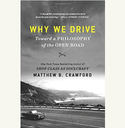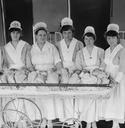Thomas W. Hilgers,
The NaPro Technology Revolution: Unleashing the Power in a Woman's Cycle
(Beaufort Books, 2010, 436 pages).
Dr Hilgers has taken on a major task: to give the lay person comprehensive information about this alternative reproductive science of NaPro technology, in a way that integrates its findings with the existing medical literature, without overwhelming the reader by too much technical detail.
He understands, from years of his own experience and research, that there is a great need for this information to be shared, and that for many people this book may be a door into a world of research and treatment that offers the true help they have been seeking. NaPro (Natural Procreative) technology is a way of diagnosing and treating reproductive and fertility problems based upon over 30 years of dedicated research and evaluation. It is a natural approach based on the basic concepts of the normal fertility cycle: by tracking the cycle in a standardized way, Dr Hilgers and his associates have been able to determine what is normal and abnormal, and to then isolate and treat the underlying causes of fertility problems.
Why is this area of reproductive research still so hidden after over a quarter century of development? It is in large part due to that intent to find underlying causes. Hilgers explains how the advent of the contraceptive pill inaugurated a major shift in reproductive medicine, from an individualized approach to the individual patient and her problem, to a generalized one-size-fits-all prescription which can effectively mask a host of symptoms for years of a patient's life. Through his work, Dr Hilgers has become all too aware of the population of women whose health issues remain untreated or become worse because the contraceptive pill is universally given to women in order to "regulate" the natural cycle - the main diagnostic indicator of their underlying problem. Since the adoption of the pill by the obstetric/gynecological profession, the funding for research and even insurance reimbursement has focused on its use in near-exclusive way.
Adding to this environment, the introduction of IVF technology has further pushed the motivation of research to the side of treating symptoms rather than searching for underlying causes, and to seeking ever-more technological and artificial means of addressing infertility. Without assuming ill-intent on the part of mainstream health practitioners, it is clear that the financial payout for hi-tech fertility treatment is high, and it grows with each new advancement.
But despite the high cost of the more accepted methods of reproductive healthcare, the disappointing reality is that because the status quo is so promoted and so little challenged, there has been very little development in the diagnostic realm in more than half a century. In fact, in some areas there has been a decline in successful treatment because practitioners are collectively losing some of the surgical expertise they once had, due to the dependence on the symptom-masking contraceptive pill.
Nevertheless, despite limited funding and widespread prejudice against his own approach, the word is slowly getting out about Dr Hilgers and the reproductive health center he founded. The patient testimonials in his book show an excitement about the hope and healing that has been discovered there, after the "abandonment" by the medical field that so many had previously experienced. While many people are still in the dark about what is causing their health and fertility problems, and about why there seems to be so little interest in truly understanding their bodies, Hilger's book offers much-needed light, and a way forward. Though some - especially those looking for a true self-help book - may find this work needlessly technical and overladen with medical speak, it should be remembered that for women unaware of the options Dr Hilgers offers, this book provides vital access to a more than superficial understanding of the normal and abnormal working of their bodies.
There are some sections of the book designated for doctors, and some of the later chapters can be quite technical in their explanations of specific health problems. But for a person suffering from these specific symptoms - and never receiving adequate diagnosis and treatment - one can surmise that there is no such thing as too much information. This book serves as a very helpful introduction to fertility awareness and the NaPro technology approach: important general information for every woman. But it is also an excellent reference manual, as the chances are good that the reader or a friend or relative will experience some of the reproductive health problems addressed in the book.
As Hilgers points out, most women are not equipped with a basic understanding of their bodies and the natural reproductive cycle. It is necessary that every woman acquire this knowledge, because the current medical environment requires the patient to be proactive about her own health, and to search for the underlying causes to various symptoms. Much of the book is focused on this concern.
In the first four chapters, Hilgers describes the two different approaches to reproductive medicine, and why and how NaPro technology and the Creighton charting method were developed. Chapters 5 through 8 provide a review of basic anatomy and physiology, of the fertility cycle and the hormones involved. The author also makes the reader aware of common misconceptions and prejudices about the information he is presenting, since it is probable that many health practitioners would discourage this approach to women's health. In chapters 8 through 14, Hilgers describes the Creighton charting system, explains the important distinction between hormones and artimones (and the implication for treatment), the promising use of progesterone support for a variety of problems, and the surgical aspects of NaPro technology. All of these chapters together give a helpful basic introduction to the field of NaPro technology. The remaining chapters deal individually with specific problems regarding fertility and reproductive health. They are a helpful reference for those who have undiagnosed or untreated symptoms, and also provide preparation for the likely scenario of being faced with such symptoms in the future.
Hilgers' book is not a quick or an easy read. But for many women it will be impossible to put it down, so much are they in need of real answers and self-understanding. An ever-growing number of women and their spouses are becoming dissatisfied and frustrated by the standard approach to their health and fertility. They want better for themselves and their daughters. Dr Hilgers' clear recognition of the dignity of each person and the need for individual, respectful care will insure that, among this group, the word will continue to get out.
Catherine Sienkiewicz is a wife and homeschooling mother of four. She lives in Virginia.



